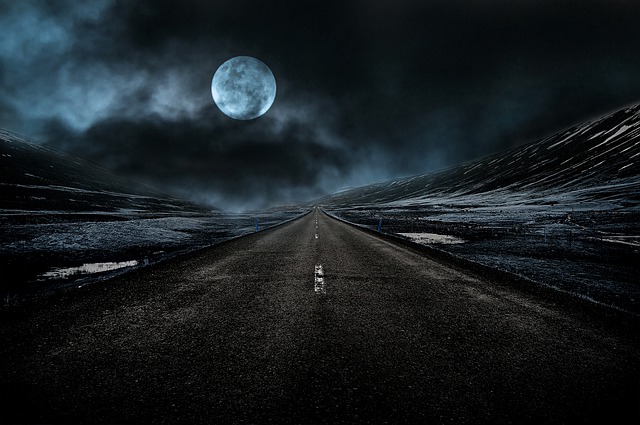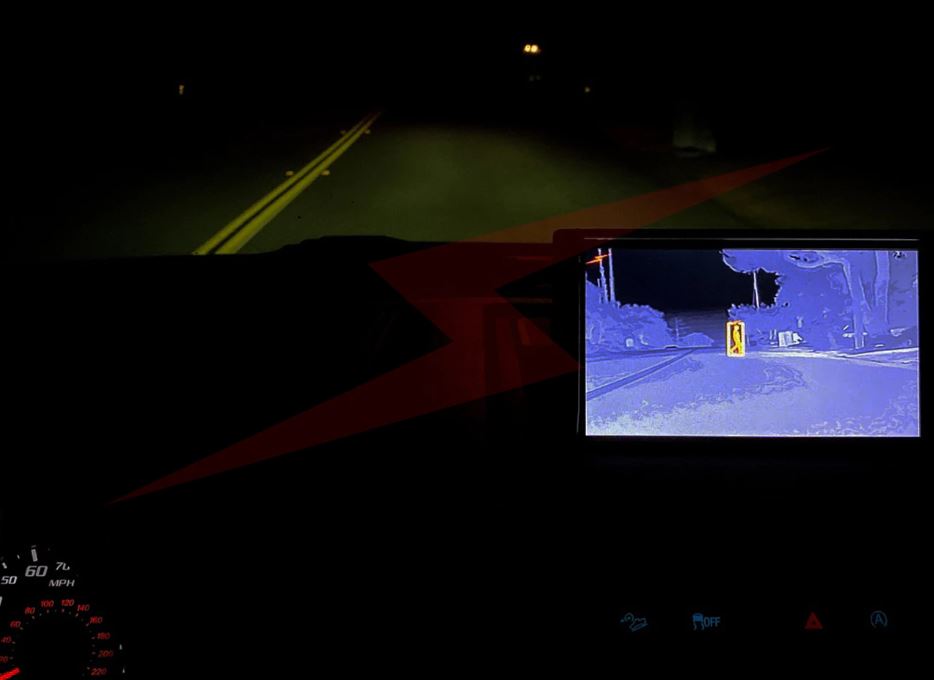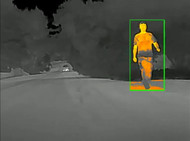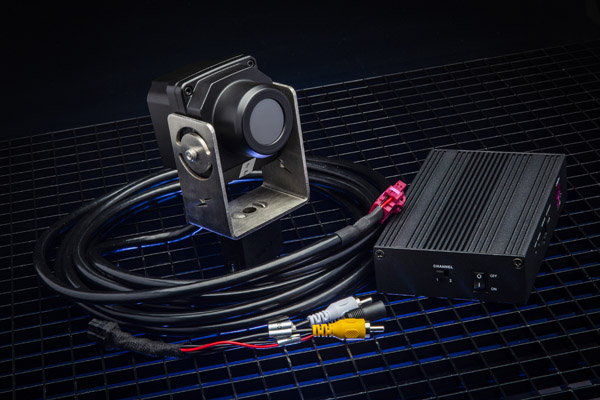Aid Your Nighttime Driving with Thermal Night Vision Cameras
Posted by Speedir Thermal Vision on 24th Jun 2019
Written by Michaela Jackson
Updated March 2023
Information on the website of the National Safety Council (NSC) suggests that nighttime is the most dangerous time to drive. The NSC reports that 50% of traffic deaths occur in the dark of night; that is 20,000 of the 40,000 people killed in car crashes in 2016. This does not even include those who are injured in these crashes, or the deaths and injuries of pedestrians. In fact, the CDC says that “most pedestrian deaths occur in urban areas, at non-intersection locations, and at night”.
The NSC states that you are approximately three times more at risk for being involved in a traffic fatality at night than any other time of day. With the onset of daylight savings come every fall, drivers find that their normal commute home becomes darker and more difficult to navigate. This factor, coupled with driver symptoms such as fatigue and poor night vision, can quickly add up to dangerous driving conditions if not properly combated. This risk is important to consider when you have to go out onto the road at night, especially when you consider the potential consequences of being in a car wreck – car damage or complete car loss, psychological and physical injuries (or even death) to both parties, insurance premium inflation, legal involvement and fees, and more.
One of the most important things you can do for you and your family or your company is to find out how to drive safer during nighttime and help reduce these staggering statistics.

Why is it so Dangerous to Drive at Night?
Many drivers, even the best of them, have difficulty driving in the dark. You can likely relate to this too. The darkness that comes with nighttime, especially when daylight savings comes in the fall every year to shorten our daylight and lengthen our nighttime exposure, is a tricky thing to navigate. In the dark, the human naked eye is severely limited, and we are forced to rely on the length of our headlights and high beams to safely drive on the road. This has often proven to be an ineffective way to drive at night, especially where safety is concerned.
Because of how limited our vision gets at night, we are much more susceptible to crashing into obstacles, pedestrians who are or are not wearing reflective gear, bikers, other cars, or even animals who rush out into the road (especially deer, who can cause severe damage to the car and to the people inside). In addition to darkness, there are other hazards that often happen at night including heavy storms with rain, fog, sleet, and snow. If it was not hard enough to drive safely at night, it is much harder to drive safely at night during these strenuous conditions.
Driving at Night Tips
There are plenty of tips out there to help you drive safer at night. On the NSC website, they advise you to make sure your headlights are aimed correctly and are clean, dim the lights inside the car (including the dashboard), do not stare directly into oncoming lights as they could temporarily blind you, wear anti-reflective glasses if you wear any, clean your windshield, avoid driving while fatigued and keep your speed slow.
Other sites, like GEICO, also advise you to drive extra defensively and avoid two-lane highways, where nighttime glare is the worst and curves and hills in the road may prevent you from seeing other cars or obstacles in enough time. They also say you should watch for wildlife, because deer-car collisions most often happen at dusk or night.
However, as helpful as these tips may be, they are often conditional and do not apply to everybody or all situations, such as wearing anti-reflective glasses or being able to find a route that avoids two-way highways. They are not guaranteed ways to make your drive at night safer by any means and are not a reliable source for actually increasing your safety. One can look out for wildlife, pedestrians, and other cars but reaction time is limited severely at night because you can only see around 250 feet ahead of you on the road with only headlights.
There are other, much more reliable ways to see better at night driving. One way is to use night vision driving aids; specifically, night vision cameras that harness thermal technology to give you the safest possible nighttime drive.

How to See Better Driving at Night: All About Automotive Night Vision Systems
Many people are, unfortunately, unaware of the amazing technology available to them that could help alleviate stress while driving at night and give them a safer, sounder commute. This technology is advanced thermal imaging, often used by many areas such as the military and law enforcement for its incredible ability to see accurately in the dark at extremely high ranges.
Today there are dash cameras with the ability to detect the thermal signatures that humans, animals, and cars put off so that drivers can be alerted of potential road hazards in plenty of time to take evasive action if needed. With this extensive detection ability, these cameras are being used by industries like car rentals, truck fleets, public transportation, ridesharing companies and first responders, to increase the safety of their drivers and reduce company costs from wrecks.
This new tech is not only for companies, though. Individuals can use these cameras to keep safe at night and prevent crashes, which can come with many costly consequences like insurance premium increases, car damages, and injuries. There is also something to be said about the peace of mind a camera like this could bring to anyone who must drive at night, which is almost everyone since daylight savings brings early sunsets before 6:00 PM in the fall and winter.
How Do Thermal Night Vision Cameras Work?
Thermal night vision cameras use infrared sensors to pick up thermal signatures, which has to do with the temperature of the object in question. This “temperature picture” from the thermal night vision camera is translated onto a screen for the driver to view, and the object emanating the heat signature is displayed in a bright color for easy distinction.
Oftentimes thermal night vision cameras can detect thermal signatures with their highly sensitive infrared sensors from up to 3000 feet beyond the normal headlights. This means that drivers will have vastly improved reaction time by using cameras that can see far beyond what the human eye could see. This improvement can greatly reduce the risk associated with nighttime driving and give the driver a peace of mind unprecedented before these powerful cameras were offered to the general public.
But the usefulness of thermal night vision cameras does not stop there. Where other cameras without thermal capabilities, like simple night vision cameras, fail to work in more extreme conditions such as dust storms and fog, the thermal night vision camera will always be able to detect heat signatures in any such condition and display them to the driver.
On top of the above, there are also AI-enabled thermal night vision cameras on the market that are not only affordable but also further mitigate risk for anyone driving at night. With the audible and visual alerts provided by Artificial Intelligence in real time, up to 400 feet away, paired with the extended range of the thermal camera, any driver will have greatly improved reaction time and can easily avoid road hazards at night.
Thermal night vision cameras are one of the most useful night driving aids on the market and are guaranteed to have you feeling and driving safer at night. If there is ever a question on your mind as to how to see better driving at night, the night vision driving aid of thermal cameras are a great solution.
Why are Speedir Thermal Night Vision Cameras so beneficial?
Infrared technology within these devices offer a unique way of peering into the darkness. Requiring no visible light to function, these high-performing thermal scanners pinpoint heat signatures and translate them into images, acting as dashcams. These images are then relayed to you. In short, if a deer hops into the road just outside of your headlights, your camera will catch it before you can. To learn the intimate ins-and-outs of thermal imaging, you can view our Thermal Imaging Platform page.
Once reserved for military-grade use, thermal tech is now broadly available for mass consumption, though Speedir offers a cost-effective solution to pricier models on the market. Our state-of-the-art thermal night vision driving cameras have gone through a rigorous research and development lifespan, and each model is produced using proprietary tech. We offer only independently manufactured devices using self-made components.
What does this mean for the average driver? Our cameras are perfect night vision driving aids at a reasonable cost. To learn more about our products, please feel free to explore our website at speedir.com or contact us at info@speedir.com!


